Apple is still working on the 2023 iPhone 15 and iPhone 15 Pro models, but as is typical with rumors, analysts, leakers, and others with insider information are already looking to the 2024 iPhone 16 lineup. 
We’ve been hearing rumors about the iPhone 16 models for quite some time now, so we thought we’d aggregate everything we know in one place to keep an eye on how the rumor cycle evolves.
Note that this roundup contains early rumors about the iPhone 16 lineup and there is still plenty of time for Apple to change its plans. Information here should not be interpreted as concrete fact at this early date.
Note: See an error in this roundup or want to offer feedback? Send us an email here.
The iPhone 16 Pro and iPhone 16 Pro Max could feature larger display sizes, according to multiple sources. The iPhone 16 Pro could have a display that’s around 6.3 inches in size, while the iPhone 16 Pro Max is expected to feature a display that’s around 6.9 inches in size.
The iPhone 16 Pro models are expected to feature a taller aspect ratio of 19.6.9, up from the current 19.5:9 aspect ratio. The change means the iPhone 16 Pro models will be slightly taller, though it will not be super noticeable.
According to display analyst Ross Young, the iPhone 16 Pro will specifically measure in at 6.27 inches, up from 6.12, and the iPhone 16 Pro Max will measure in at 6.86 inches, up from 6.69 inches. That’s a display size increase of 2.5 percent. While the larger display sizes will be limited to the iPhone 16 Pro models in 2024, Apple plans to bring them to the standard iPhone models in 2025 with the launch of the iPhone 17.
Leaked CAD renderings of the iPhone 16 suggest that the iPhone 16 Pro Max will have a taller display, with is in line with rumors of a size increase. 
The iPhone 16 OLED panels could use micro-lens technology for both improved brightness and and reduced power consumption. Micro-lens arrays or MLA uses a uniform pattern of billions of lenses inside the panel to reduce internal reflection. The reflected light increases perceived brightness without increasing power consumption.
With the iPhone 16, Apple could introduce a high-end iPhone 16 “Ultra” that would be sold alongside the iPhone 16, iPhone 16 Plus, iPhone 16 Pro, and iPhone 16 Pro Max. The device would be positioned as the top-of-the-line iPhone offering, and it could feature additional camera improvements, a bigger display, and perhaps even a portless design.
For the iPhone 15 Pro models, Apple originally wanted to introduce solid-state volume, power, and mute buttons that would replace the physical buttons, but due to “unresolved technical issues” the feature was pulled from the iPhone 15 Pro and Pro Max.
Instead, rumors now suggest that Apple will delay solid-state buttons until 2024, instead adding them to the iPhone 16 Pro models. Bloomberg‘s Mark Gurman says that it is “likely” that Apple will use the technology for the iPhone 16 Pro, and if that happens, we might also see the unified button design that was rumored for the iPhone 15 Pro models.
Solid-state buttons can be used in the same way as a physical button, but there is no actual button press that occurs when you touch it. Instead, a haptic vibration is used to mimic a button press and give you the sensation of pressing down even when there is no actual physical movement of the button.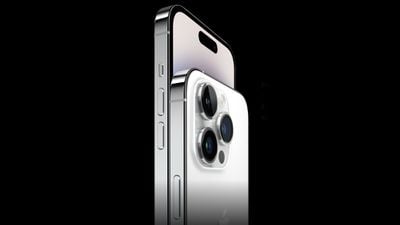
Apple already uses solid-state technology for the Touch ID Home button on the iPhone SE and the trackpad on the MacBook Pro and MacBook Air models. On these devices, you can use a press gesture and it feels like you’ve pressed a button, but in reality, it’s a solid surface with haptic feedback. Solid-state button technology can improve protection against dust and water because it does not need a physical depressing mechanic, but it does require extra hardware inside the iPhone. Apple was rumored to be adding two additional Taptic Engines to the iPhone 15 Pro models to power the solid-state buttons, so that will presumably be how the iPhone 16 Pro models work.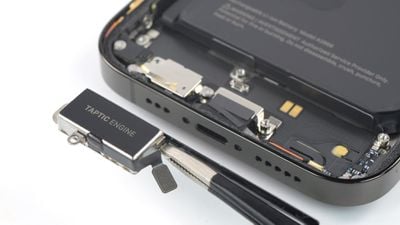
Note that there is some disagreement about whether solid-state button technology will be ready for the iPhone 16 Pro models. Analyst Jeff Pu believes there is a “low” chance that the devices will get the updated button option, so this may be a feature that has been scrapped all together or that will be coming at a later date. We will likely hear more on solid-state buttons a bit later in the rumor cycle.
Since at least 2019, Apple has been working to develop its own modem chip and antenna setup, which would allow it to stop sourcing components from Qualcomm and Broadcom. The first Apple-designed 5G modem chips could debut in the 2024 iPhone 16 models. 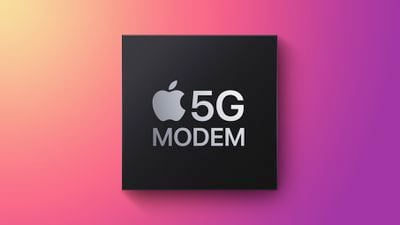
Apple initially wanted to introduce its own modem chips in 2023, but ran into delays in late 2022 that required the project to be pushed back. As of now, it seems Apple’s plan is to introduce the new modem chip in at least one iPhone model in 2024.
The first version of the modem chip will include separate wireless components, but eventually, Apple wants to create an all-in-one chip that combines the cellular modem, WiFi, and Bluetooth functions.
Apple has been unhappy with Qualcomm’s licensing terms and sued the San Diego company back in 2017 for unfair royalties. At the time, Apple planned to swap over to Intel modem chips, but it was at the 5G transition and Intel was not able to manufacture components that were up to Apple’s standards. Apple ultimately settled its lawsuit with Qualcomm, while Intel ended its modem chip business and sold the remnants to Apple. Qualcomm’s CEO has said that he expects Apple to adopt its own modem chips in 2024.
Apple analyst Ming-Chi Kuo believes the iPhone 16 Pro models could adopt the net-generation WiFi 7 technology, which is expected to provide speeds of “at least 30” gigabits per second, and could hit up to 40Gb/s.
Wi-Fi 7 is also able to use 320MHz channels and supports 4K quadrature amplitude modulation (QAM) technology, ultimately providing up to 2.4x faster speeds than Wi-Fi 6 with the same number of antennas. Wi-Fi 7 will ultimately provide faster maximum transfer speeds, lower latency, and more reliably connectivity.
Apple will transition to USB-C technology with the iPhone 15 lineup, and it’s also expected to be used for the iPhone 16 models. 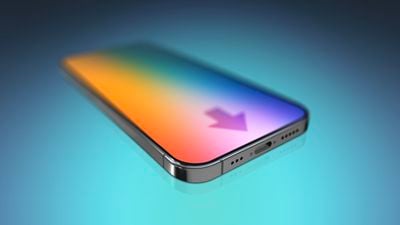
At least one iPhone in 2024 could feature a portless design that would do away with the USB-C connector, and charging and data transfer would be done through MagSafe or a similar technology.
There were rumors that the iPhone 16 Pro models could adopt under-display Face ID technology, but now it appears that under-display Face ID might not be coming until 2025. Under display Face ID will allow for more usable display space as there will be no need for the full Dynamic Island.
Korean site The Elec has said that under-display Face ID technology could be introduced as soon as 2024 with the iPhone 16 Pro models, but display analyst Ross Young thinks the technology is still at least two years away. With Young’s timeline, under display Face ID would not be available until the iPhone 17 Pro, which would leave the iPhone 16 Pro models with the Dynamic Island.
When under-display Face ID launches, there will be a circular cutout for the camera, similar to how manufacturers like Samsung handle front-facing camera technology.
The iPhone 16 Pro models could include a 48-megapixel Ultra Wide lens, which would allow improved images in lower lighting conditions. It would likely function like the 48-megapixel Wide camera, which uses pixel binning to combine the data from four pixels into one “super pixel” for better image quality.
The 48-megapixel wide-angle camera used in the iPhone 16 Pro Max will reportedly feature an eight-part hybrid lens with two glass elements and six plastic elements, along with improvements for the telephoto and ultra wide camera lenses.
Both the iPhone 16 Pro and the iPhone 16 Pro Max could get periscope telephoto lenses in 2024. In 2023, the iPhone 15 Pro Max will be the only device to get the new camera technology because of size constraints.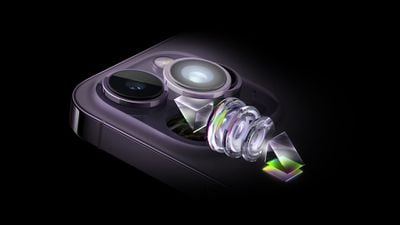
With a periscope lens, light is reflected by an angled mirror toward the image sensor in the camera. The directional shift allows for a “folded” telephoto lens system for improved optical zoom capabilities without the blurriness that comes with digital zoom. The iPhone 15 Pro Max is expected to feature 6x optical zoom, so the 16 Pro Max could have the same 6x optical zoom feature.
The iPhone 16 Pro models are set to adopt a stacked rear camera sensor design, according to Apple analyst Ming-Chi Kuo. The stacked design will first be introduced in the standard iPhone 15 models before being used across the entire iPhone 16 lineup. A stacked design will capture more light.
The standard iPhone 16 models could have a vertical camera layout that’s similar to the camera layout used in the iPhone 12. Apple has used a diagonal layout for the iPhone 13 and iPhone 14, and it’s not clear why the company would swap back to a vertical layout. 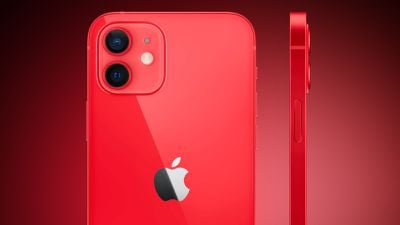
The iPhone 16 Pro Max could feature a super telephoto periscope camera for a dramatically increased optical zoom. The information comes from a Weibo account that has provided accurate information in the past, but it has not yet been backed up by a second reliable source.
“Super” or “ultra” telephoto usually describes cameras with a focal length of over 300mm. The current telephoto lens is equivalent to a 77mm lens, so if accurate, there could be a notable increase in zoom capabilities.
Rumors suggest the iPhone 16 Pro models will use stacked battery technology, which can result in higher capacity and a longer lifespan. Stacked batteries are common in electric vehicles and medical devices, but are an emerging technology for smartphones.
The stacked battery could come alongside faster 40W wired charging and 20W MagSafe charging.
The iPhone 16 models are expected to come out in September 2024, and they will follow the 2023 iPhone 15 models.
ProMotion technology that adds up to 120Hz refresh rates to the iPhone’s display is expected to come to standard iPhone models starting in 2025. Up until 2025, ProMotion will be limited to the higher-end “Pro” iPhones.
With the 2026 iPhone 18, Apple will have both under-display Face ID and under-display front-facing camera technology, potentially allowing for a design that has no cutouts for the camera hardware. This would mark the first all-display design.
MacRumors attracts a broad audience of both consumers and professionals interested in the latest technologies and products. We also boast an active community focused on purchasing decisions and technical aspects of the iPhone, iPod, iPad, and Mac platforms.
